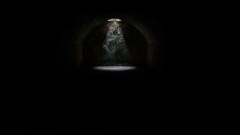The New Yorker ran a fascinating article on The Passion of the Christ in their September 15 issue. It gives a lot of the background to the movie, focusing on Mel Gibson’s background and beliefs as well as the controversy the movement generated based on its perceived racism. The full text of the article can be read here. Here are some interesting snippets:
I told Gibson that I am a Protestant, and asked whether his pre-Vatican II world view disqualified me from eternal salvation. He paused. “There is no salvation for those outside the Church,” he said. “I believe it.”
Gibson talked to him for a while, and convinced him of the purity of his intent. They did business, and just before Gibson left the man pulled something out, and offered it to Gibson as a gift. It was a small, faded piece of cloth. “What is it?” he asked. The man told him that he had a special devotion to a nineteenth-century Augustinian nun, Anne Catherine Emmerich, and that the cloth was a piece of her habit … He says that when he was researching “The Passion” one evening he reached up for a book, and Brentano’s volume tumbled out of the shelf into his hands. He sat down to read it, and was flabbergasted by the vivid imagery of Emmerich’s visions. “Amazing images,” he said. “She supplied me with stuff I never would have thought of.” The one image that is most noticeable in “The Passion” is a scene after Jesus’ scourging, when a grief-stricken Mary gets down on her knees to mop up his blood.
one of the most dismaying elements of Gibson’s undertaking was his insistence that his film would be accurate. She [Paula Fredriksen, a Catholic Jesus scholar] notes that Gibson relied on an uninformed reading of the Gospels, as well as upon extra-scriptural Catholic literature, such as the writings of two stigmatic nuns.










